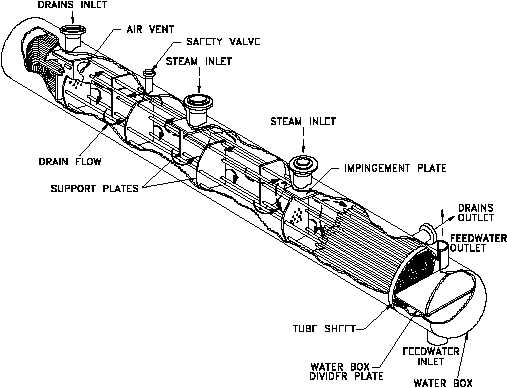Heat Exchangers
DOE-HDBK-1018/1-93
HEAT EXCHANGER APPLICATIONS
This means the feedwater is exposed to the condensed steam first and then travels through the
tubes and back around to the top right end of the heat exchanger. After making the 180 bend,
the partially heated feedwater is then subjected to the hotter steam entering the shell side.
Figure 8 U-tube Feedwater Heat Exchanger
The feedwater is further heated by the hot steam and then exits the heat exchanger. In this type
of heat exchanger, the shell side fluid level is very important in determining the efficiency of
the heat exchanger, as the shell side fluid level determines the number of tubes exposed to the
hot steam.
Radiator
Commonly, heat exchangers are thought of as liquid-to-liquid devices only. But a heat
exchanger is any device that transfers heat from one fluid to another. Some of a facility's
equipment depend on air-to-liquid heat exchangers. The most familiar example of an air-to-
liquid heat exchanger is a car radiator. The coolant flowing in the engine picks up heat from
the engine block and carries it to the radiator. From the radiator, the hot coolant flows into the
tube side of the radiator (heat exchanger). The relatively cool air flowing over the outside of the
tubes picks up the heat, reducing the temperature of the coolant.
Rev. 0
ME-02
Page 13

